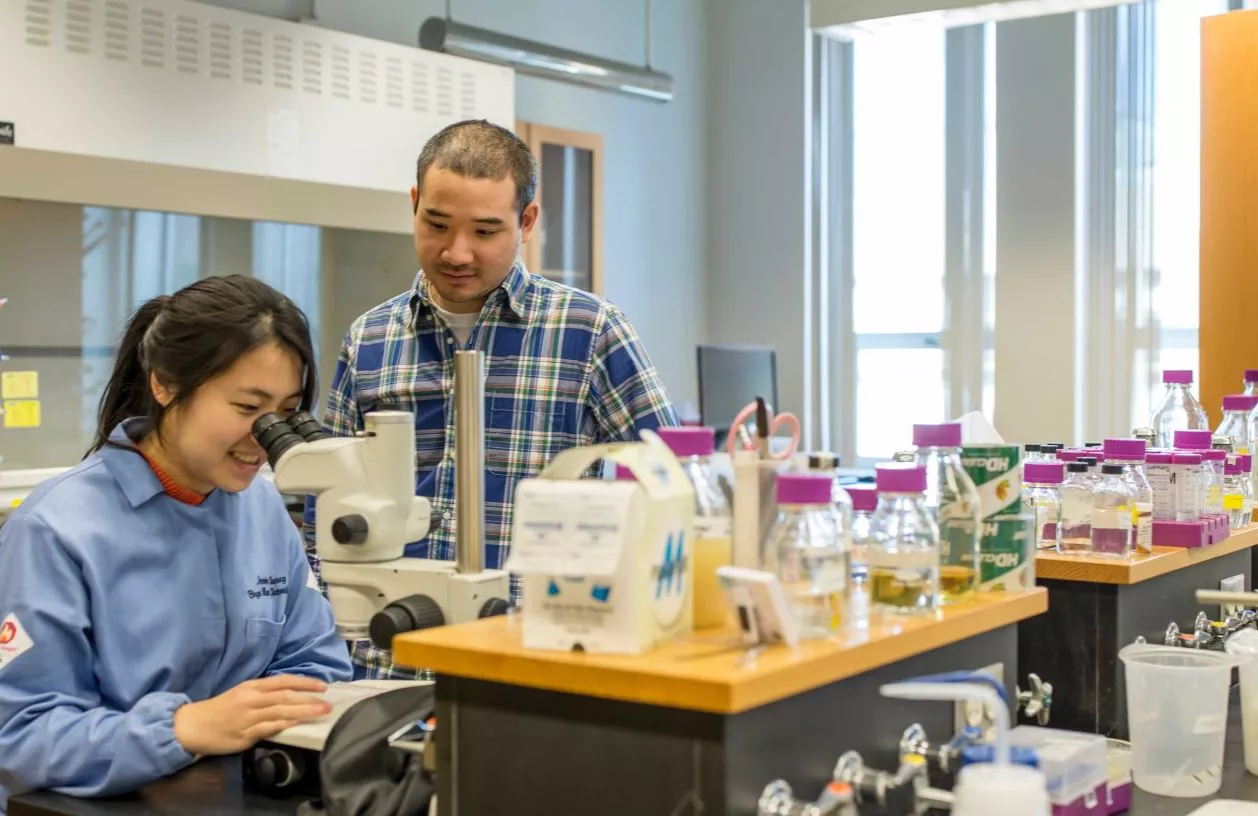Professor Kung and Students Receive NIH Grant to Improve Research on Enzymes

“Part science, part black magic.”
That’s how Assistant Professor of Chemistry Yan Kung describes the process of purifying and crystallizing an enzyme.
Because there’s so much trial and error involved in the process of crystallizing a purified enzyme from a solution, Kung and his students have had to do bulk screenings using plates with 96 tiny wells. In the past, a student could spend the better part of a day working with a micropipette to do the painstakingly precise work.
However now, thanks to a nearly $300,000 grant from the National Institutes of Health, the same job can be done in a matter of minutes using a new robotic sample dispenser, leaving the researchers more time to map and research the structure of these important molecules.
“For this research, we’re looking at enzymes that are involved in making drug molecules,” says Kung. “The eventual application of this research may allow microorganisms such as bacteria and yeast to make drugs using encoded enzymes, without the potentially toxic chemical waste associated with some current manufacturing processes.“
In addition to the robotic sample dispenser, the grant will help fund student research and travel to conferences and to synchrotron X-ray light source facilities located at various national laboratories in the United States, including the Advanced Photon Source at Argonne National Laboratory and the Advanced Light Source at Lawrence Berkeley National Laboratory.
“Once we have the crystallized enzyme, we can then go to a synchrotron particle accelerator and shoot super-bright X-rays through the crystal,” explains Kung. “Using the resulting X-ray diffraction we can create a three-dimensional image of the enzyme down to the atomic level. This allows us to find the positions of every one of the tens of thousands of atoms in a particular enzyme. Once we know what the structure looks like, we can then infer how the enzyme works."
And once researchers know how an enzyme works, they can attempt to engineer the enzyme to catalyze a reaction differently than it does in nature.
“There are already some drugs being created this way and it has the potential to allow for much more environmentally friendly manufacturing practices,” says Kung.
Kung joined Bryn Mawr’s faculty in 2013 after a postdoctoral fellowship at the Lawrence Berkeley National Laboratory at U.C. Berkeley. He currently has four undergraduates and two graduate students working in his lab.
“Dr. Kung is an incredibly caring, knowledgeable, enthusiastic, patient, and understanding mentor,” says lab member Eri Arai ’16. “ He cares about each and every lab member's progress and is very committed to helping us further develop our knowledge and skills in biochemistry.”
Eri is currently working on protein overexpression, purification, and crystallization of HMG-CoA reductase (HMGR) from Delftia acidovorans. She recently attended the 18th Annual Undergraduate Research Symposium in the Chemical and Biological Sciences at the University of Maryland, Baltimore County, with another fellow lab member to present their research.
“In the lab I have been able to familiarize myself with a plethora of new lab techniques and equipment, which has prepared me for future work in science research after graduation,” says Eri. “Doing research has challenged me to think more critically, independently, and creatively. Personally, it has helped me with my time management, decision-making, and self-motivation skills.”
Students interested in joining the Kung Lab should contact Assistant Professor Kung directly.